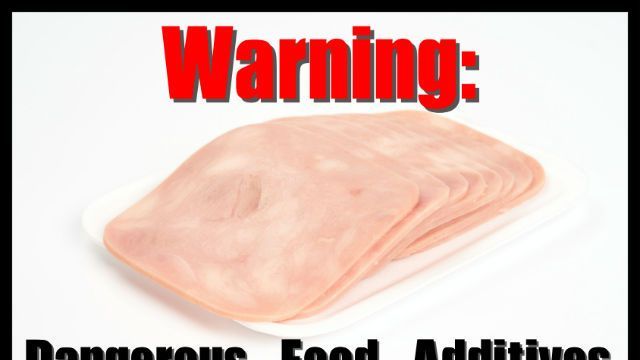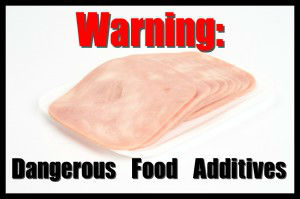
A well-known responsibility of the US Food and Drug Administration (FDA) is to regulate the quality of food in the United States, and the ingredients they contain, as well as to ensure our food safety.
The question then is whether or not the FDA is really keeping our food safe? The answer, as many of us have read all-too-many times, is often no.
The Environmental Working Group (EWG)’s yearly “Dirty Dozen” list, which details the US fruits and vegetables with the highest pesticide concentrations, is a common reference in many households. Now, the EWG has released a new list: the “Dirty Dozen Guide to Food Additives.”
The EWG website explains: “EWG’s ‘Dirty Dozen Guide to Food Additives’ helps you figure it all out by highlighting some of the worst failures of the regulatory system. The guide covers ingredients associated with serious health concerns, additives banned or restricted in other countries and other substances that shouldn’t be in food. And it underscores the need for better government oversight of our food system.”
Data for the guide was compiled from numerous studies on hundreds of food additives used across the United States (according to the guide, there are over 10,000 additives used in total). The EWG’s Food Scores Database was also used, which includes nutritional and ingredient details for over 80,000 foods.
And the ‘winning’ (or should we say losing) additives are:
- Nitrates and nitrites
- Potassium bromate
- Propyl paraben
- Butylated hydroxyanisole (BHA)
- Butylated hydroxytoluene (BHT)
- Propyl gallate
- Theobromine
- Secret flavor ingredients
- Artificial colors
- Diacetyl
- Phosphates
- Aluminum additives
“Food additives linked to health concerns”
One especially disturbing category that some of these additives fall under is “Food additives linked to health concerns.” These include potassium bromate, which is used to help processed bread products rise. This additive is classified by the International Cancer Agency as a “possible human carcinogen,” as it has been found to cause tumors, DNA damage and kidney toxicity in animal studies. Potassium bromate is banned in Canada and the UK, but the US continues to use it.
Nitrates and nitrites, the EWG’s guide says, are also of particular concern. These additives are most often found in processed meats, including deli meats, salami, sausage, hot dogs and bologna. Within the body, nitrites can react with amines, natural parts of proteins, and form carcinogenic nitrosamines. Yet, the FDA has not banned them from America’s meats.
 “Generally recognized as safe (GRAS)”
“Generally recognized as safe (GRAS)”
In the new Guide, the EWG makes clear that it wishes to shed light on the problems surrounding “generally recognized as safe” (GRAS) designations. This label is provided not by the FDA, but by the food manufacturers themselves – and we all know whose best interests they have at heart. While the FDA does not have anything to do with this label, it allows companies to use additives with this designation – without FDA approval – in our food.
One additive in this category is propyl gallate, which is a preservative in processed products which contain fats (as you can imagine, a lot of foods may contain this additive). Studies have found links between propyl gallate and tumors in rat studies. Other research has suggested that it may have estrogen-mimicking properties.
Another, butylated hydroxyanisole (BHA), is a preservative added to flavorings and fat-containing processed foods. According to the National Toxicology Program, BHA is, “reasonably anticipated to be a human carcinogen.” In the European Union, this additive is classified as an endocrine disruptor, as it has been found to lower certain thyroid hormones, as well as testosterone, in some animal studies.
Artificial colors
Also on the new Dirty Dozen list are artificial colors. These compounds, often derived from petroleum and other industrial chemicals, have been widely linked to behavioral issues and hyperactivity in children, as well as a risk of severe allergic reactions. As we previously explored , some of the worst are also linked to cancers.
What do we do?
As far as the additives on the new Dirty Dozen list, the EWG recommends avoiding them. We wholeheartedly agree. Make sure to always check the labels on what you are buying – if you can’t pronounce an ingredient, it’s very likely not food. As many of these ingredients are common in processed foods, cutting these out of your diet is essential.
You’ll be amazed at how much better you feel eating whole, organic, REAL food, prepared with love in your own kitchen. And, if people all over the US stop buying fake foods with chemical poisons, companies will have to eventually listen and change their recipes if they are to stay in business.
As far as the FDA, it will have to step up its game soon if it is to earn back our respect.
-The Alternative Daily
Sources:
http://www.ewg.org/research/ewg-s-dirty-dozen-guide-food-additives
http://www.foodsafetynews.com/2014/11/environmental-working-group-releases-first-dirty-dozen-list-for-food-additives/#.VGeMyPnF-Dp
https://www.thealternativedaily.com/5-foods-you-should-always-buy-organic
https://www.thealternativedaily.com/top-5-worst-artificial-colors

